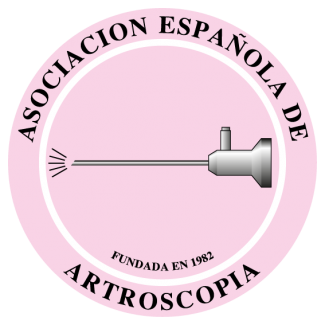Image obtained from the lateral port, through complete supraspinatus rupture. We observe a MESO sb (small band) variant, identifying cord- or band-like tissue running from the main origin of the long portion of the biceps (LPB), in the upper labrum, to contact with the supraspinatus or superior capsule.
The LPB is a continuous subject of study from the anatomic and arthroscopic perspective. The origin of the long portion presents some variability in terms of its proximal insertion - the supraglenoid tubercle and upper portion of the labrum being the most widely accepted points of origin. Pal et al.(1) described an incidence of LPB insertion in the supraglenoid tubercle of 75% and of 25% in the upper labrum, while Vangsness et al.(2) described a frequency of 50% in the tubercle and 50% in the upper labrum.
In addition, anatomical variants in the origin of the LPB have been reported in proportions ranging from 1.9-7.4%. These variants have been described in different ways as absent, splits (Y shape) or of extraarticular origin, or corresponding to the rotator cuff itself. Dierickx et al.(3) classified all these variants into 12 types from the embryological perspective, establishing four groups (mesotendon, adherent, split and absence of LPB), and correlated certain variants to an increased incidence of associated disease.
[[{"fid":"4725","view_mode":"image_cover","fields":{"format":"image_cover","alignment":""},"type":"media","field_deltas":{"1":{"format":"image_cover","alignment":""}},"link_text":null,"attributes":{"class":"media-element file-image-cover","data-delta":"1"}}]]

